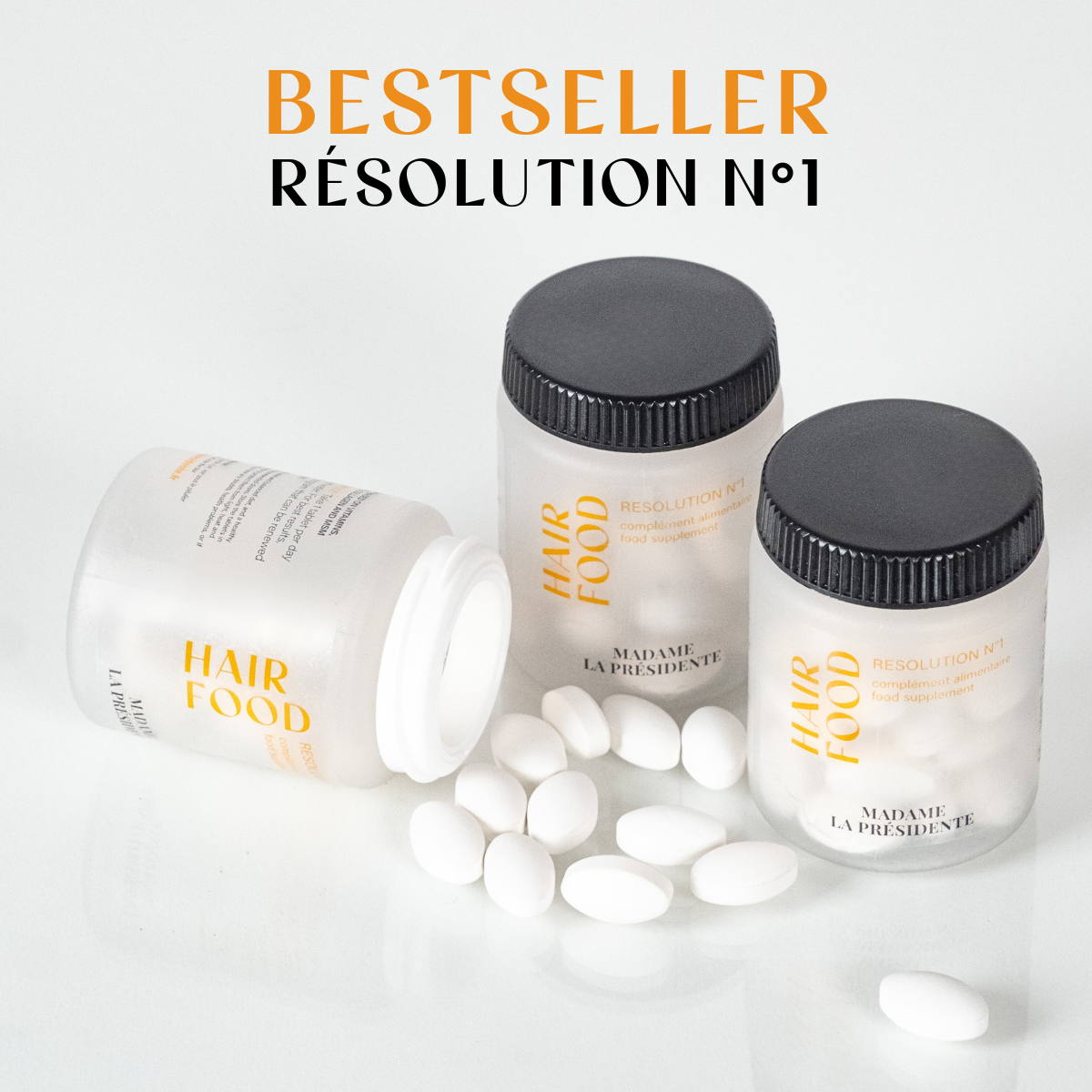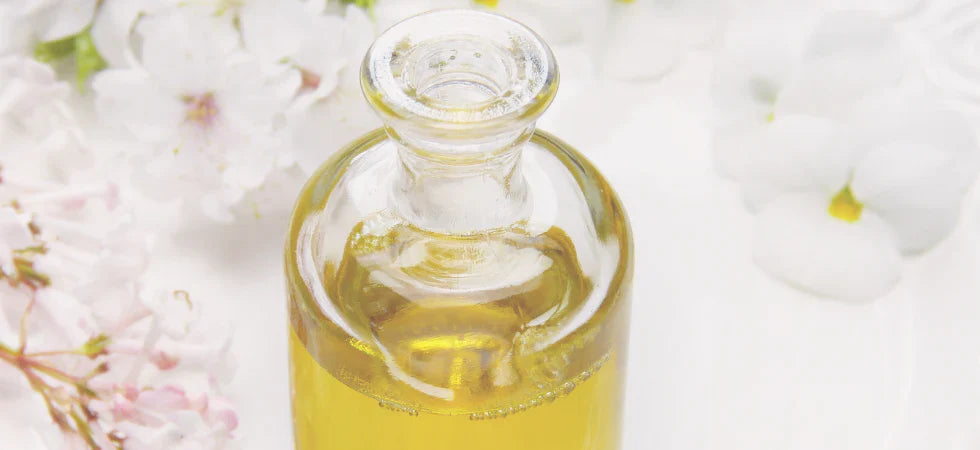What are the benefits of camelina oil?
Camelina oil, still relatively unknown, is a natural treasure with numerous benefits. Extracted from the seeds of the Camelina sativa plant, also known as "bastard flax," this vegetable oil is distinguished by its exceptional composition of essential fatty acids, particularly omega-3, omega-6, and omega-9. Used for centuries, it is prized for its ability to meet a variety of needs, from skin hydration and repair to overall health benefits. Its versatility and gentleness make it an essential ingredient in natural cosmetics and balanced nutrition.
In a world where the focus on natural products and sustainable solutions is booming, camelina oil is emerging as a valuable ally. Its anti-inflammatory, antioxidant, and regenerative properties make it a preferred choice for those looking to enhance their skin, strengthen their hair, or improve their overall well-being. Let's explore in detail the many benefits of this still relatively unknown oil and the best way to incorporate it into our daily routines.
What is Camelina Oil?
Origin and extraction
Camelina, or wild flax, is a plant belonging to the Brassicaceae family. Native to Central Europe and Asia, it has been cultivated for centuries for its oil-rich seeds. Due to its historical popularity in Germany, it is sometimes called "German sesame".
The oil is obtained through a first cold pressing method, which preserves its precious unsaturated fatty acids and nutritional properties. This gentle extraction guarantees a high-quality oil, ideal for both culinary and cosmetic uses. Camelina oil is distinguished by its golden color and light, herbaceous scent, sometimes reminiscent of green vegetables.

Composition and key nutrients
One of the major advantages of camelina oil lies in its exceptional composition, which makes it a true source of benefits for the skin, hair, and overall health. This oil is distinguished by a particularly high concentration of essential fatty acids, vital nutrients that the human body cannot produce on its own and must therefore obtain through diet or external treatments.
It includes, in particular:
Omega-3 (35 to 45%) : Primarily in the form of alpha-linolenic acid (ALA), this fatty acid is known for its anti-inflammatory properties and its benefits for cell regeneration. ALA plays a key role in protecting cell membranes, which helps maintain healthy, radiant skin.
Omega-6 and omega-9 : these lipids, present in balanced amounts, strengthen the skin barrier, promote skin elasticity, and improve hydration. Linoleic acid, a type of omega-6, is particularly valued for its ability to soothe irritated or sensitive skin.
Specific acids such as eicosenoic acid, palmitoleic acid, and traces of other rare lipids contribute to deeply nourishing skin tissues.
In addition to its richness in unsaturated fats, camelina oil is also an excellent source of vitamin E , a powerful natural antioxidant. This vitamin helps protect cells against damage caused by free radicals, thus slowing down the skin aging process. Finally, its low content of saturated fatty acids, such as palmitic and stearic acids, makes it particularly light and suitable for daily use, without clogging pores or weighing down the skin or hair.
Thanks to its harmonious and balanced composition, camelina oil offers a synergy of restorative, moisturizing and protective properties, ideal for meeting the needs of the most demanding skin and hair.
Benefits of Camelina Oil for the Skin
Deep hydration
Camelina oil is an excellent choice for dry or dehydrated skin thanks to its richness in essential fatty acids, particularly omega-3 and omega-6. These lipids work synergistically to restore and maintain the skin's hydration. By strengthening the skin barrier, it limits transepidermal water loss, leaving skin soft, supple, and perfectly nourished. Unlike some heavier oils, camelina oil is distinguished by its lightness and its ability to penetrate the skin quickly, without leaving a greasy residue. It is therefore suitable for both normal and sensitive or irritated skin.
Its hydrating effect is particularly beneficial in winter, when skin is put to the test by the cold, or in summer, after prolonged sun exposure. Combined with traditional moisturizers, it enhances their effectiveness while providing an extra touch of comfort.

Reduction of skin inflammation
Camelina oil's anti-inflammatory properties make it a natural solution for soothing irritated skin or skin prone to chronic inflammation. Thanks to its high omega-3 content, it helps regulate the skin's inflammatory mechanisms, thus calming redness, itching, and tightness.
Studies have shown that the essential fatty acids in camelina oil help reduce the symptoms of certain skin conditions, such as eczema, psoriasis, and atopic dermatitis. Its soothing action is enhanced by its light texture, which allows for direct application to sensitive areas without the risk of aggravating irritation. It is often recommended by naturopaths as a gentle and effective alternative to pharmaceutical products.
Healing properties
Camelina oil is also known for its regenerative properties, which promote the healing of minor wounds and irritations. By deeply nourishing the epidermis, it stimulates cell renewal, helping damaged skin repair more quickly.
It is particularly useful for treating skin weakened by external aggressions: chapped skin due to cold, minor burns, irritations caused by friction or allergic reactions. Its composition, rich in unsaturated fatty acids and vitamin E, also protects healing tissues against oxidation, thus reducing the risk of residual marks.
Anti-aging and antioxidant
Camelina oil is a valuable ally in the fight against the signs of skin aging. Thanks to its high vitamin E and unsaturated lipid content, it acts as a powerful natural antioxidant. These compounds neutralize free radicals, the main culprits behind cell damage and premature skin aging.
When used regularly, it helps reduce the appearance of wrinkles and fine lines, while improving skin elasticity and firmness. By boosting natural collagen production, it helps maintain a radiant complexion and smooth texture. Furthermore, its moisturizing effect strengthens the skin barrier, thus preventing the formation of new wrinkles caused by dehydration.
Camelina oil is therefore particularly recommended for mature skin, but its preventative properties also make it an excellent choice for younger skin wishing to preserve its natural radiance. Integrated into a daily routine, it provides truly comprehensive care, combining protection, repair, and radiance, helping to soothe irritations, reduce redness, and relieve itching. Naturopaths recommend its use for treating conditions such as eczema, dermatitis, and psoriasis.
Cosmetic Uses of Camelina Oil
In skincare
Camelina oil can be used as a hydrating serum or added to facial creams. Applied after cleansing, it deeply nourishes and leaves skin soft without feeling greasy. Thanks to its light texture, it absorbs quickly into the epidermis and doesn't clog pores, making it suitable for combination to oily skin. It is also suitable for sensitive skin, prone to irritation or redness, providing immediate soothing relief.
In addition to daily use, camelina oil can be incorporated into specific treatments, such as homemade masks. Mixed with clay or other plant oils, it creates customized treatments to hydrate, purify, or soothe according to your skin's needs.
In hair care
For hair, camelina oil is a truly restorative and nourishing treatment. Applied as a mask before shampooing, it revitalizes dry, damaged, or brittle hair by providing essential fatty molecules. It can also be used in small amounts on the ends after styling to reduce frizz and protect hair from external aggressors, such as pollution or heat styling tools.
For sensitive or irritated scalps, camelina oil offers a natural solution. A gentle massage with this oil helps soothe itching and improve blood circulation, thus promoting healthy hair growth. Camelina oil application tips

Camelina Oil Application Tips
How to incorporate camelina oil into your routine
Camelina oil is easy to incorporate into a skincare routine. For the face, apply a few drops to clean skin, morning and evening. For hair, mix it with other oils such as coconut or argan oil for a complete treatment.
Precautions and best practices
Before using it regularly, it is recommended to test camelina oil on a small area to check for any allergic reaction. Choose a cold-pressed oil to ensure optimal composition.
Compare with other cosmetic oils
Distinct Benefits of Camelina Oil
Camelina oil stands out for its high omega-3 content, making it particularly beneficial for its anti-inflammatory and anti-aging effects. Compared to jojoba or sweet almond oil, it offers lighter hydration and faster absorption.
Synergy with other oils
Combined with oils like argan or linseed oil, camelina can enhance its repairing and moisturizing effects. Blended with essential oils, it becomes a personalized treatment to meet specific needs.
Conclusion
Camelina oil, extracted from the seeds of Camelina sativa, is a vegetable oil with remarkable properties. Its composition, rich in essential fatty molecules, particularly omega-3, makes it a key ingredient for skin and hair care, as well as for overall health.
Its anti-inflammatory, moisturizing and antioxidant properties make it an essential ally in cosmetic and dietary routines.
Incorporating this oil into your daily routine, whether for facial care or simply adding a touch to your recipes, will allow you to fully enjoy its unique benefits. So why not try it today?
To learn more, check out our other articles on vegetable oils:
How to use camelina oil?
Camelina oil is a versatile product that easily integrates into various routines, whether for skincare, haircare, or cooking. For cosmetic use, it can be applied directly to the skin, ideally after cleansing to maximize absorption. A few drops are enough to moisturize the face or dry areas of the body.
It can also be used as a massage oil or mixed with creams or serums to enhance their moisturizing and soothing properties.
For hair, camelina oil is applied as a pre-shampoo oil treatment to nourish the lengths and soothe the scalp. A small amount can also be used on dry ends to restore suppleness and shine.
In cooking, camelina sativa oil is ideal for cold dressings. One teaspoon a day, added to salads, green vegetables, or other dishes, is enough to enjoy its nutritional benefits, particularly its omega-3 content. It is important to note that this oil should not be heated, as this could alter its essential nutrients.
What are the benefits of camelina?
Camelina oil benefits: Camelina oil offers a wide range of benefits, both externally and internally. Its main advantages include:
Deep hydration : It nourishes and softens the skin while strengthening the skin barrier.
Anti-inflammatory properties : Thanks to its high omega-3 content, it soothes irritations and reduces redness.
Healing properties : It promotes cell regeneration, ideal for repairing minor injuries or irritations.
Anti-aging effect : Its natural antioxidants, such as vitamin E, help prevent skin aging by neutralizing free radicals.
Nutritional benefits : When used in food, camelina oil contributes to cardiovascular health, proper brain function, and the reduction of internal inflammation.
How much camelina oil per day?
For dietary use, it is recommended to consume one to two teaspoons per day. This allows you to benefit from its richness in essential fatty acids, particularly omega-3 (alpha-linolenic acid), which play a crucial role in maintaining good cardiovascular, brain, and immune health.
If you are using camelina oil as part of a nutritional program or on the advice of a naturopath, the amount can be adjusted according to your specific needs. It is important not to exceed the recommended doses to avoid any risk or imbalance in your lipid intake, particularly between omega-3 and omega-6 fatty acids.
In cosmetic use, the quantity depends on the application. A small dab is generally enough to moisturize the face, while a tablespoon is ideal for a hair oil treatment.


